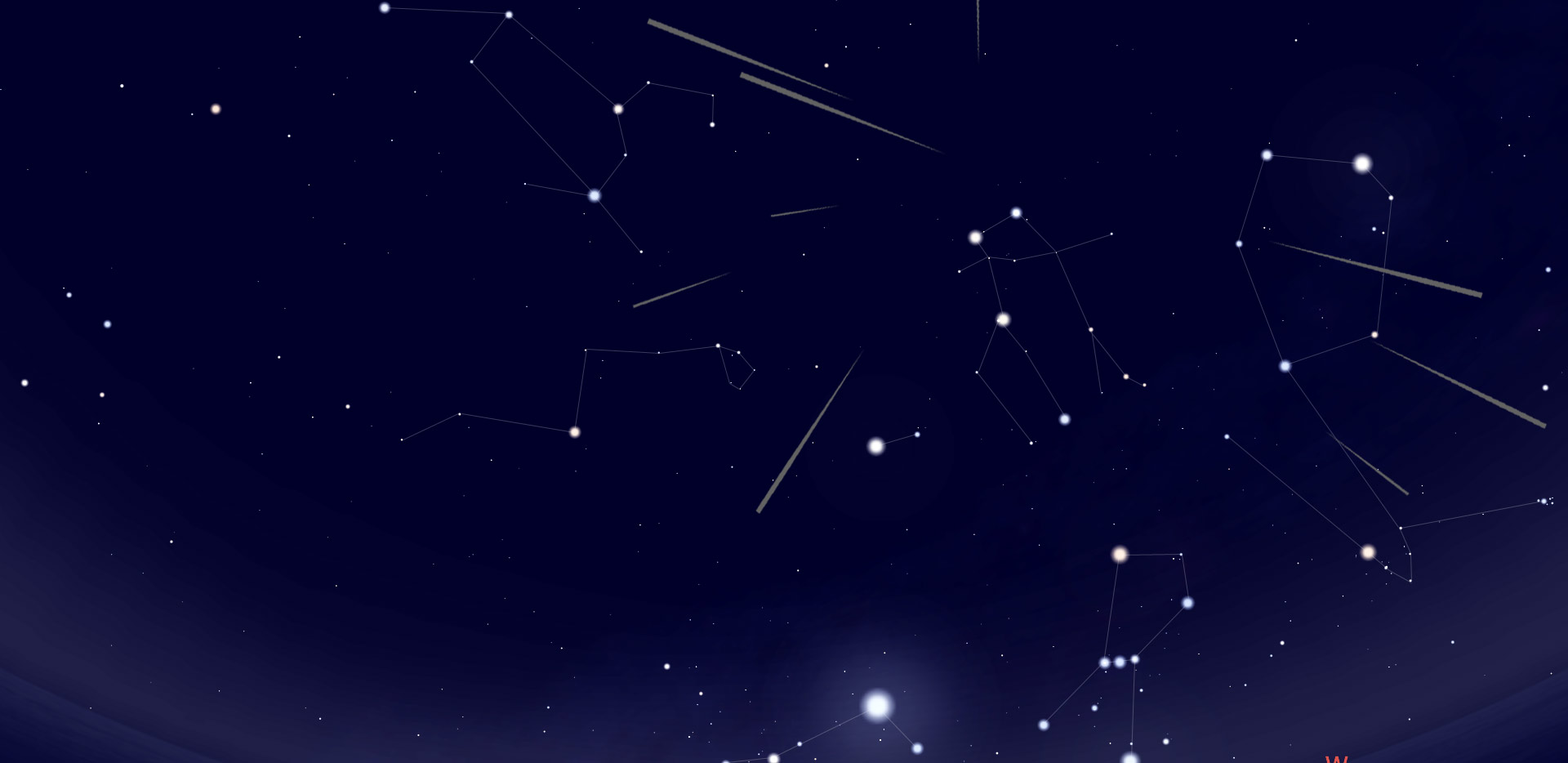
December Astronomical Highlights
December 2013 :
Note: This article may contain outdated information
This article was published in the December 2013 issue of The Skyscraper and likely contains some information that was pertinent only for that month. It is being provided here for historical reference only.
In order to meet mid-November deadlines, this column is being written several weeks before comet ISON’s close encounter with the Sun. The comet was still around 8th magnitude, which is two to three magnitudes fainter than what the naked-eye can see, especially here in the light- polluted skies of the Northeast. Will it become visible without optical aid before passing within 700,000 miles of the Sun’s surface on Thanksgiving Day? Will it survive that close approach and be visible during the first week or two in December?
With comets anything is possible. I can only hope something dramatic happens that will cause ISON to brighten substantially to become an easy target for even a casual stargazer to observe. Visit the Skyscrapers website for sky diagrams showing where to find ISON.
Venus will be the brilliant beacon in the southwestern sky after sunset all month. Should you need a clue to its position in the sky, the waxing crescent Moon will be above and to the right of our closest planetary neighbor on December 5th. The following evening Venus will be at its brightest, shining at magnitude -4.9.
This night would be a good time to focus a telescope on both of these beautiful worlds. A telescopic view of Venus will show its crescent phase, appearing slightly more illuminated than the Moon’s phase. While a slim portion of the Moon will be sunlit, the entire surface facing us will be illuminated by Earthshine. Why? If you were on the Moon and looking back at the Earth, the Earth’s phase would be waning gibbous—just past Full. It’s so bright that the lunar surface will be bathed in the reflected sunlight off our planet.
Next up will be the Geminid meteor shower on the night of December 13-14. The good news is that this date occurs on a Friday night through to Saturday morning. Unfortunately a now bright waxing gibbous Moon will hamper observing the normal peak rate of 60+ meteors per hour that the Geminid shower can consistently produce.
Though the Geminids can be observed before midnight, the Moon will most certainly wash out all but the brightest shooting stars. Under moonless skies last year I observed a total of 36 Geminids in two hours. Unfortunately this year the Moon will be present all night and won’t set until around 4:21 a.m. EST. This timing only provides an observing window of about 1 ½ hours to observe as many meteors as possible without moonlight interfering.
These shooting stars will appear to radiate from a point in the sky near Gemini’s brightest stars, Castor and Pollux. After moonset, Gemini will be from 40 to 50 degrees above the western horizon. To observe, face that direction and scan around. It’s going to be cold, so keep warm and stay awake!
The Geminids are fairly bright and moderate in speed, hitting our atmosphere at 21.75 miles per second. They are characterized by their multicolored display (65% being white, 26% yellow, and the remaining 9% blue, red and green). Geminids also have a reputation for producing exploding meteors called fireballs.
In addition, on December 21 at 12:11p.m., the northern hemisphere celebrates the Winter Solstice—the beginning of winter. Notice the low arc the Sun “travels” across the sky. At least the days begin to get longer after this important astronomical event. Which long-range winter forecast will Mother Nature follow? The mild to average one issued by the National Weather Service, or the cold and snowy one predicted by the Old Farmer’s Almanac? Regardless, we have no control over either one! Just go with the snow…errrr, go with the flow!
And finally, as we count off the days in December, get ready to say goodbye to some of our favorite constellations, like Hercules, Lyra and Cygnus in that order. And say hello to Taurus, Orion and Gemini.
Don’t forget to visit the local Rhode Island observatories even during the winter months when clear skies often prevail. However, be sure to check all the websites for the open night schedules and times before visiting these magnificent facilities. Wintry conditions can force unexpected closures.
Seagrave Memorial Observatory in North Scituate is open to the public every clear Saturday night, although it will be closed on December 14.
Ladd Observatory in Providence is open every clear Tuesday night.
Frosty Drew Observatory in Charlestown is open every clear Friday night year-round.
Happy holidays and clear skies to all.
PS. Just a day before my column deadline, Comet ISON suddenly brightened by two magnitudes (6.3 times brighter). Possibly a new crack or vent on the comet’s surface opened up to allow the release of “fresh” material from below. Or perhaps the comet started rotating (some early research had suggested it wasn’t). The onset of rotation could allow portions of the comet that had not yet been subjected to the Sun’s heating or solar wind to now react to either of those influences. Time will tell if the brightening is a short-lived effect or one that could still provide some outstanding naked-eye views.



